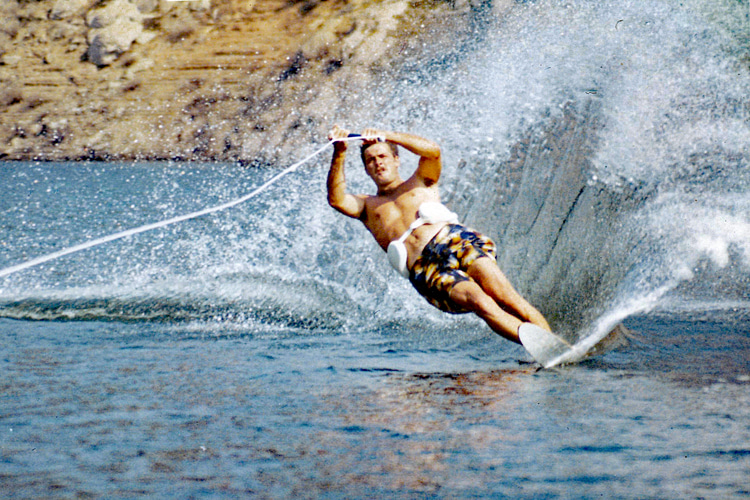Craig Libuse has been a waterman from an early age. He was raised summers at his grandparents' home on a chain of lakes in Wisconsin.
Libuse became a good swimmer and boater at a young age and felt a special kinship to the water world.
When his father, an Air Force pilot, was transferred to Riverside in 1954, the nine-year-old moved from the Midwest to Southern California.
Craig and his best friend Hugh took up skin diving, skimboarding, bodysurfing, and mat surfing whenever they could hitch a ride to Laguna Beach or Newport.
By the early 1960s, they had each acquired a half interest in a 10'2" Wardy surfboard, which was eventually stolen from his friend's garage and replaced in 1964 with a nicer Hobie longboard.
While attending UCLA from 1964-1968, Craig had part-time custody of the board.
Craig graduated from UCLA in 1968 with a degree in industrial design and a commission as a second lieutenant in the U. S. Air Force.
His first duty station was Beale Air Force Base in central California at the foothills of the Sierra Nevada mountains.
There, he purchased his first and second boats and spent weekends water skiing at the local mountain lakes.
Completing his four-year tour of duty in 1972, he returned to Carlsbad, California, and an apartment within walking distance of Tamarack Beach.
There, his life was about to take a lucky turn.
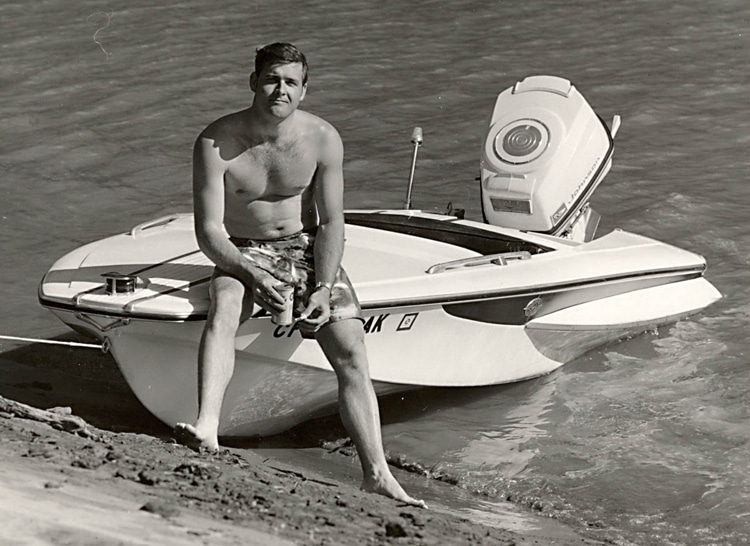
The Flexible Slab of Foam
He and his wife had taken up kneeboarding, but one day they saw two young surfers riding a flexible slab of foam.
It maneuvered amazingly and didn't threaten to knock you out if you got hit by it when you wiped out.
The kids turned out to be teenagers Bobby Szabad and his friend Rick Roberson, both of whom would go on to become Tom Morey's first production employees.
"I don't really remember the exact circumstances of my very first ride on a boogie board," stresses Craig.
"I thought my wife would like it better than the kneeboard she was then trying to learn to ride."
Bobby introduced Craig to Tom Morey, who was at the time living on the corner of Chestnut and Garfield in Carlsbad, and Tom hand-shaped a blue and white kit board for Craig's wife.
After trying it out, Craig had a second green-and-black "kit" board shaped for himself, and their kneeboards were promptly retired.
He rode nothing else for years.
Craig was also a self-taught boogie-woogie and blues piano player, so the word "Boogie" already had a special connotation of fun for him.
He knew from the first time Tom mentioned the name that it was going to be a hit.
"I do recall thinking 'what a great idea' when first seeing one in action," notes Libuse.
"I always felt it was going to be big, but still underestimated its eventual success and influence on surfing worldwide by quite a bit."
The green-and-black "kit" board now resides at the California Surf Museum in Oceanside, California.
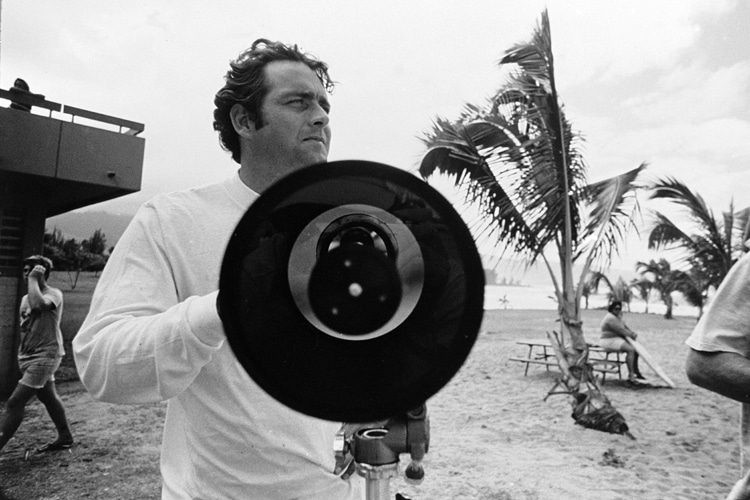
Designing the Morey Boogie Logo
As Morey and the company grew and moved into a small factory facility on Oak Street in Carlsbad, Craig offered to help Tom design a logo for the new product.
The founder of the Morey Boogie wanted an image showing a boy or a girl with long hair blending into the wave as they became part of the ocean.
The logo he developed became iconic for the product for many years, and the $25 Craig was paid for the rights to it became his first paycheck with Morey Boogie.
Craig's degree at UCLA was in Industrial Design and Graphic Arts.
After leaving the Air Force, Craig and his father Frank started a small Design firm in San Marcos, California, and Craig negotiated a contract with Tom where he would spend 12 hours a week (Monday, Wednesday, and Friday, from 8 am to 12 pm) working at a drawing board at the Morey factory.
His job was to produce the many pieces of point-of-sale posters, magazine advertisements, and other graphics required to keep the new line of boards fresh and feed the cult-like following that was bringing thousands of new people into surfing every month by this time.
The first $25 commission ended up leading to a 15-year relationship as Tom's art director that shaped both Craig's career and the product line's success.
Tom Morey was a familiar name in the surfing world, and being associated with the success of the Morey Boogie board led to many contacts within the surfing and watersports world.
After Morey Boogie was purchased by Kransco, their expansion brought new product lines like Skurfer, Churchill fins, Hydroslide kneeboards, Windjammer sailboards, and of course, Morey Doyle soft surfboards.
It was a true privilege to work with the likes of Tom and Mike, but working with those lines also brought introductions to people like Hobie Alter and Hobie Cat sailboats as well as other surf and watersports contracts.
Craig's artwork was on many Hobie Cat event t-shirts over the years.
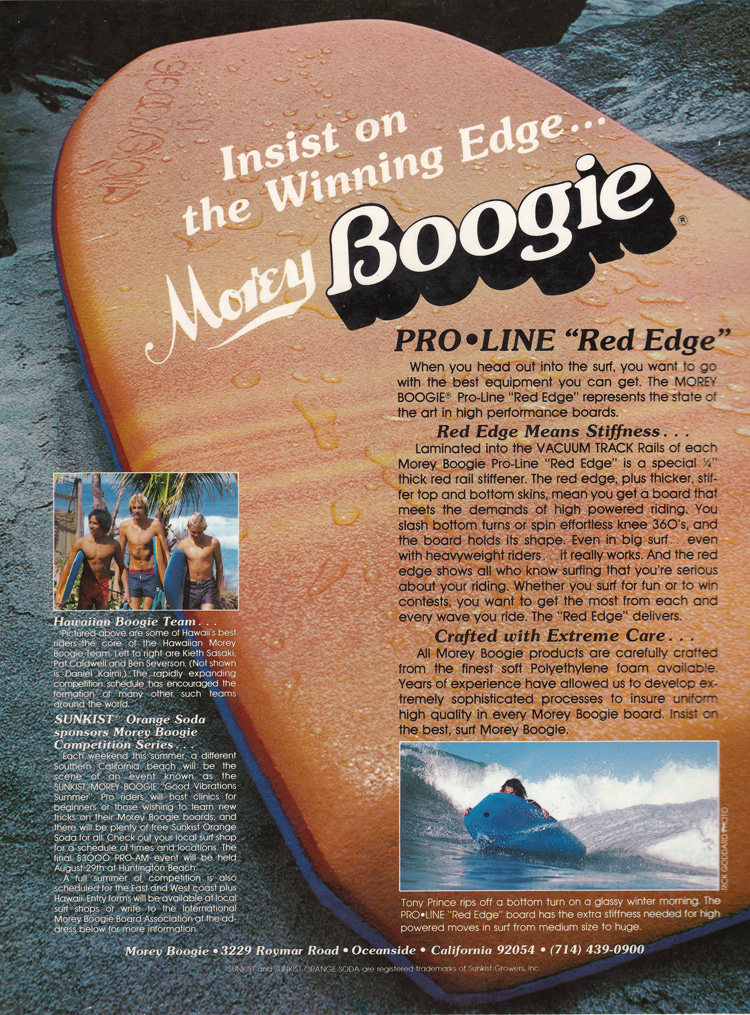
A Competitive Bodyboarding Experience
At first, Craig and his wife were the only people along the Carlsbad beaches who used the lightweight boogie board.
In March 1975, Tom held the first Morey Boogie Contest at the Huntington Beach pier.
The format didn't stress tricks but rather the length of time on the wave.
Each ride was timed with a stopwatch, and the guy (or girl) with the most time on waves during their heat advanced.
The concept does end up selecting the best "waterman" given the need to paddle out fast, pick off the best waves, get a long ride and then be in condition to paddle out fast and do it again.
Craig finished second in the senior men's division that day and his wife finished first in the women's division.
"I wish I could claim I won that first contest," notes Libuse.
"But just being there was one of many historic moments I was able to share thanks to Tom and his board."
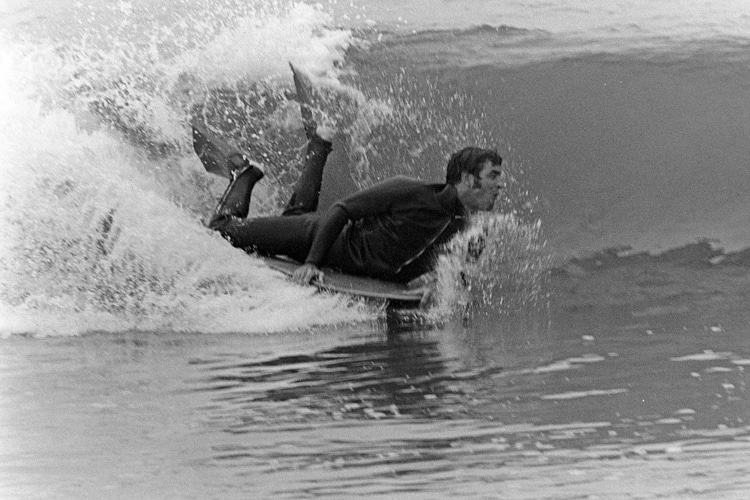
An All-Around Waterman
Craig Libuse never really "transitioned" from water skiing to surfing.
"You could say I transitioned from surfing and bodyboarding when bursitis in my shoulders kept them sore for a week after a session that involved a lot of paddling."
Windsurfing began to fill that gap in the 1980s.
Once you learned to use a harness, you could sail all day with little effort, using your weight hanging in the harness and just small inputs of mast/sail movement for maneuvering.
"I sailed for many years after cutting back on riding waves," continues Libuse.
"At the same time, every summer, I would spend my vacation at our family summer cottage in Wisconsin where I had access to a nice 17' bowrider boat with a 90 HP outboard, which was enough to be able to slalom ski, kneeboard, wakeboard, and wakesurf."
Several years ago, Craig Libuse sold the ski boat and bought a pontoon boat. He also has a kayak and a canoe in Wisconsin and another of each in Tennessee.
The Morey Boogie logo creator is happy with his legacy.
"I lived through an era of relative aloha in surfing in the 1960s when longboarders welcomed riders to their favorite spots to the 1980s and the advent of localism where it could get violent if you dropped in on the wrong guy at any of the popular, crowded breaks," adds Libuse.
"To relive the best of those days now, I listen to the Surf Rock Radio channel on Pandora. I love the music of that era."
"I wouldn't mind having the theme from the 'The Endless Summer' by The Sandals played at my funeral."
